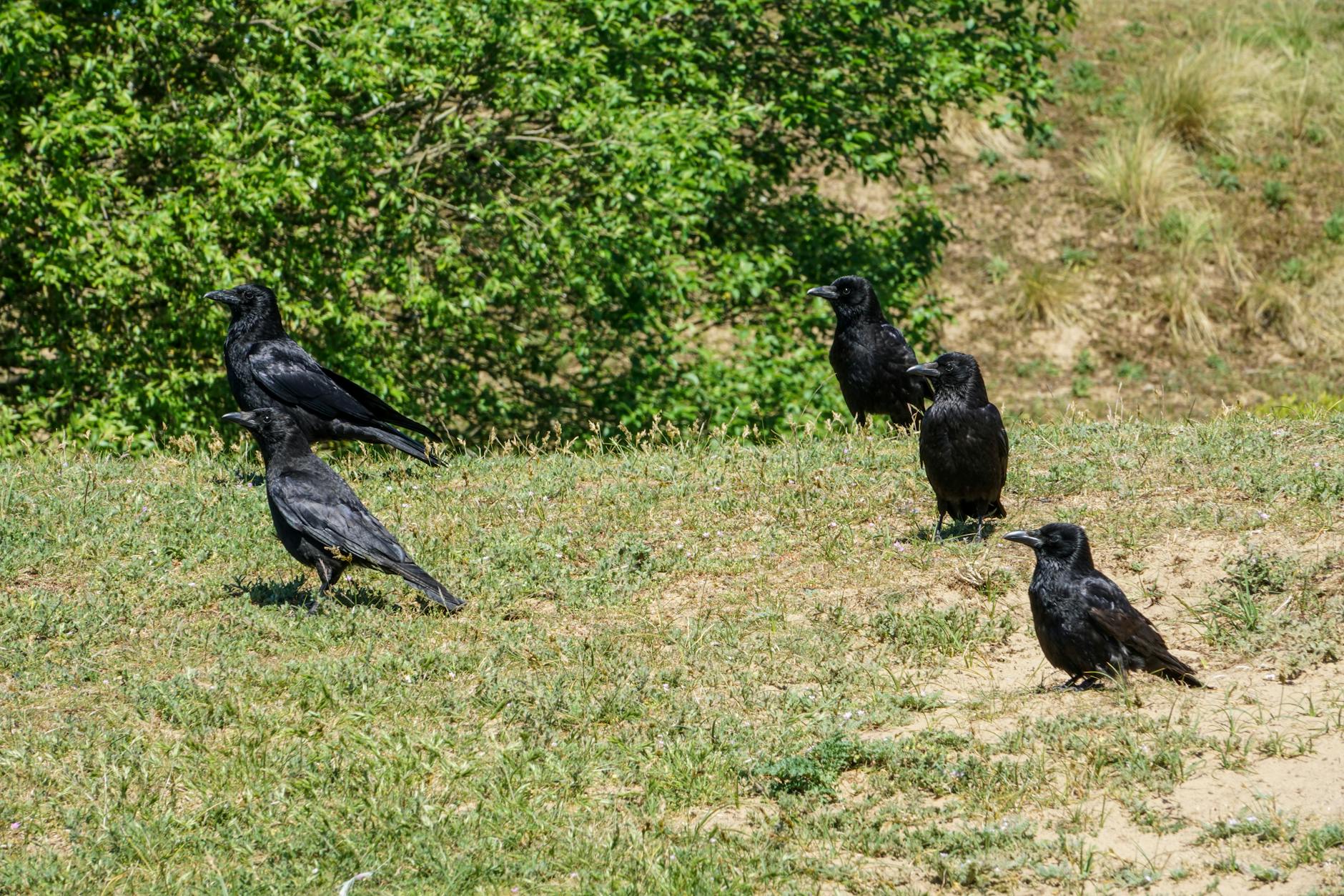Collective nouns enrich our language by providing specific terms for groups of animals, and crows have some of the most fascinating collective nouns in the English language. These intelligent birds, known for their complex social behaviors and remarkable problem-solving abilities, have inspired various collective terms that reflect their nature and cultural significance.
Understanding Collective Nouns
Collective nouns represent groups of individuals, animals, or things viewed as a single unit. Unlike regular nouns that identify single entities, these terms encompass multiple members under one descriptive word. These terms emerged in the 15th century and have been popularized through literature, folklore, and poetry.
Common Collective Nouns for Crows
The most recognized collective nouns for crows include:
Murder: The most famous term, evoking the bird’s historical associations with folklore and superstition.
Flock: A general term used for various birds, including crows.
Parcel: A less common but equally valid term for a group of crows.
Unique and Lesser-Known Terms
Some distinctive collective nouns for crows include:
Caw: Reflecting the distinctive vocalization of these birds.
Conspiracy: Alluding to their mysterious and seemingly strategic behavior.
Storytelling: Representing their complex social interactions and communication.
Usage in Context
Here are some example sentences demonstrating proper usage:
“A murder of crows circled ominously above the field, their dark silhouettes stark against the evening sky.”
“The conspiracy of crows began their evening rituals in the park, sharing mysterious calls as twilight approached.”
Cultural Significance
Crows are remarkably intelligent creatures capable of using tools, recognizing human faces, and engaging in play. Their behavioral traits have influenced the creation of these collective nouns, reflecting both their natural characteristics and their portrayal in literature and folklore.
Key Takeaways
Understanding collective nouns for crows enriches our appreciation of both language and nature. Each term encapsulates not just a grouping but also characteristics and behaviors that deepen our engagement with these remarkable birds. Whether observing a murder of crows in flight or listening to a storytelling of crows share their calls, these collective nouns add depth and precision to our descriptions of these fascinating creatures.
20 Example Sentences with Highlighted Elements
- “A murder of crows descended upon the abandoned cornfield at dusk.”
- “The conspiracy of crows gathered mysteriously around the ancient oak tree.”
- “We observed a storytelling of crows exchanging calls across the morning mist.”
- “The parcel of crows demonstrated remarkable intelligence while solving puzzles.”
- “A horde of crows swooped down onto the freshly plowed field.”
- “The farmer watched as a flock of crows organized themselves on the telephone wire.”
- “A congress of crows debated loudly in the town square.”
- “The cauldron of crows circled above the medieval castle ruins.”
- “A muster of crows assembled near the old church steeple.”
- “The hover of crows maintained their position against the strong wind.”
- “A building of crows constructed their nests in the urban landscape.”
- “The gathering of crows communicated through complex vocal patterns.”
- “A party of crows celebrated with aerial acrobatics at sunrise.”
- “The company of crows patrolled their territory with vigilance.”
- “A band of crows performed their morning ritual in perfect synchronization.”
- “The crowd of crows participated in cooperative hunting behavior.”
- “A congregation of crows assembled for their evening meeting.”
- “The parliament of crows deliberated over their next migration route.”
- “A storytelling of crows shared ancient wisdom through their calls.”
- “The murder of crows executed their complex social interactions with precision.”
Historical Origins and Etymology
The term murder as a collective noun for crows dates back to the 15th century, originating from medieval folklore and superstition. This dark association stems from the crow’s role as a carrion bird and its frequent appearance in Gothic literature. The word emerged during a period when collective nouns were being codified in the English language, particularly through texts like “The Book of Saint Albans” (1486).
Behavioral Context Behind Collective Terms
Social Structure Reflection
Crows exhibit complex social behaviors that have inspired various collective nouns:
| Collective Noun | Behavioral Association |
|---|---|
| Parliament | Group decision-making |
| Conspiracy | Strategic planning |
| Storytelling | Communication patterns |
| Murder | Protective grouping |
Seasonal Variations
The use of different collective nouns often reflects seasonal behavior:
Winter Groupings: Larger congregations form during colder months
Spring Formations: Smaller, family-based units emerge
Summer Clusters: Mixed-age groups develop
Autumn Assemblies: Migratory gatherings occur
Literary and Cultural Impact
The collective nouns for crows have significantly influenced literature and art:
“In literature, a murder of crows often symbolizes impending doom or supernatural presence, while a storytelling of crows represents wisdom and memory.”
Modern Usage Trends
Contemporary writers and naturalists have embraced these terms while introducing new variations:
- Digital Age Terms: “Upload of crows” for urban gatherings
- Environmental Context: “Conference of crows” for climate-related behaviors
- Urban Settings: “Committee of crows” for city-dwelling groups
Grammar and Usage Guidelines
Proper Application
When using collective nouns for crows, consider:
- Context Appropriateness: Match the term to the situation
- Number Agreement: Treat the collective noun as a single unit
- Descriptive Accuracy: Choose terms that reflect observed behavior
Common Mistakes to Avoid
- Mixing metaphors with collective nouns
- Using inappropriate terms for small groups
- Applying human-centric terms without context
Scientific Perspective
Research has shown that crow gatherings serve multiple purposes:
- Information sharing
- Mate selection
- Territory defense
- Communal roosting
- Predator protection
Key Takeaways
Understanding collective nouns for crows goes beyond mere vocabulary enhancement. These terms reflect centuries of human observation, cultural evolution, and scientific understanding. They serve as linguistic tools that capture the essence of crow behavior while enriching our descriptive capabilities. Whether used in scientific documentation, creative writing, or everyday observation, these collective nouns add depth and precision to our communication about these remarkable birds.
